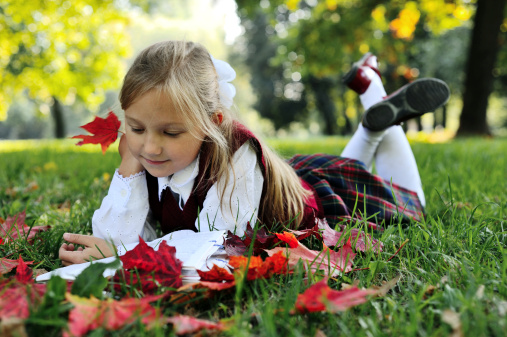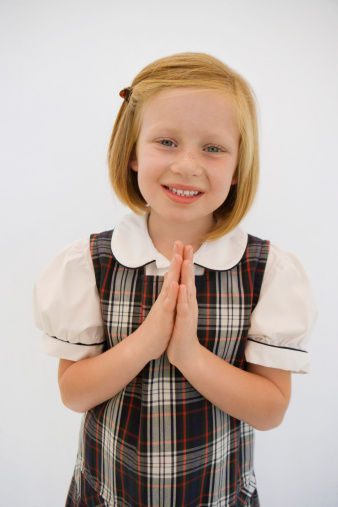 The onset of COVID-19, increased animosity toward parents in public schools, and growth in the number of school choice policies, are combining into an historic increase in Catholic school enrollments across the country.
The onset of COVID-19, increased animosity toward parents in public schools, and growth in the number of school choice policies, are combining into an historic increase in Catholic school enrollments across the country.According to the Manhattan Institute, Catholic school enrollments began to rise during the pandemic when they found a way to safely bring back in-person learning while public schools lagged behind.
“While virtually all schools shifted from in-person to remote learning in March 2020, it was Catholic school leaders who led the way on school reopening in September 2020,” the Institute reports. “Indeed, while just 43% of public schools and 34% of charter schools offered in-person learning in September 2020, fully 92% of Catholic schools offered in-person learning.”
Many public school districts did not reopen until the fall of 2021. “This fueled intense frustration among many parents, who appeared to vote with their feet by moving their students into the schools that had stayed open throughout the 2020–21 school year: local Catholic schools.”
The once steadfast relationship between parents and their local public school district eroded during the pandemic and saw public school enrollment drop three percent overall with some cities such as New York reporting record numbers of students opting for other schooling choices.
Nowhere was this more evident than in Northern Virginia, the epicenter of the Covid school closure controversy.
“Given that Virginia kept public schools closed longer than the vast majority of other states in the nation, it’s hardly surprising that the state experienced one of the nation’s largest increases in Catholic school enrollment,” the Institute reports. “After experiencing a slight dip (–1.8%), enrollment across the state soared by 8.8% in 2021–22. The lion’s share of those Catholic school enrollment increases were concentrated in the Diocese of Arlington, which includes the cities and counties that were at the epicenter of much of the school reopening and Covid-mitigation debates in 2021.”
This pattern has repeated itself across the country and amounted to an historic 3.8 percent nationwide enrollment increase for all Catholic elementary and secondary schools, which is the first increase in two decades and the largest recorded increased by the National Catholic Educational Association (NCEA).
 “This increase is remarkable not only because it is the first nationwide Catholic school enrollment increase in 25 years but also because public schools around the country are reporting significant enrollment declines in both years of the pandemic,” the report states. “Indeed, recent public-school enrollment analyses reveal not only that public-school enrollment between 2020 and 2022 cratered but that the longer districts remained in remote or hybrid learning, the more dramatic their enrollment declines.”
“This increase is remarkable not only because it is the first nationwide Catholic school enrollment increase in 25 years but also because public schools around the country are reporting significant enrollment declines in both years of the pandemic,” the report states. “Indeed, recent public-school enrollment analyses reveal not only that public-school enrollment between 2020 and 2022 cratered but that the longer districts remained in remote or hybrid learning, the more dramatic their enrollment declines.”
These declines show no sign of stopping now that the Covid pandemic is over. Continued school controversies such as the inclusion of biological males in female sports, the introduction of Critical Race Theory, and animosity toward parental involvement in what’s taught in schools, continues to fuel parents’ migration to Catholic schools.
An EWTN News/RealClear Opinion Research poll of Catholic voters found that 47% of respondents with children in public school said they have considered, in the past year, moving their children from a public school to a private or parochial school because of concerns about the quality of the education received.
“A majority of Catholic voters also support parents of K–12 students helping determine what is being taught in schools (64%), oppose biological boys who identify as girls competing against biological girls on school sports teams (76%), and oppose introducing Critical Race Theory (CRT) into the classroom (60%),” the Catholic News Agency (CNA) reports.
“I really think the value of Catholic education became very clear to families during the pandemic, and how we handled the pandemic,” said Donna Hargens, superintendent for schools for the Archdiocese of Baltimore to CNA.
Hargens told CNA that in her discussions with parents, many expressed a desire for a “Christ-centered, academically excellent environment that focuses on the whole child spiritually, emotionally, physically, morally, and academically.”
Jennifer Feldhaus, principal of Infant of Prague Catholic School (IOPCS) in Jacksonville, North Carolina, told CNA that they were seeing younger parents choosing Catholic education for their children from the onset rather than transferring them from public schools. This has resulted in a 95 percent increase in student enrollment in the last decade which is causing the school to purchase and renovate buildings in order to expand classroom space.
Many of these students came during the pandemic, “But now that we’re a year or so into it, they’re looking at the long-term value of a quality Catholic education. Once they’re here within this school, the retention rates are very high for families,” Feldhaus said.
Another important factor in increased enrollment in Catholic schools is the presence of school-choice programs such as vouchers, tax credits or Education Savings Accounts (ESA). The Manhattan Institute found that in the six states that have ESAs, enrollment increases were twice as large (6.3%) as in states with no ESAs (3.6%).
“The bottom line: when parents have more control over the money spent on their children’s education, they use it to opt into Catholic schools,” the report states.
Enrollment is looking up for Catholic schools, which can translate into an increase in the promulgation of the faith throughout the country. But there’s still plenty of work to do if the Church wants to turn these numbers into an enduring trendline.
For Catholic school supporters, it’s a reminder that “if we want to turn the 2021–22 rebound into an enduring, system-wide enrollment shift, we must seize the window of opportunity we have been given by doing more to maintain these gains,” the report states.
They suggest four things to do to maintain this upward momentum: eliminate some of the obstacles to growth in public schools such as streamlining the enrollment process and scholarship paperwork; focus on getting newly enrolled students to re-enroll, particularly in the pre-K to kindergarten year; consider new governance models for urban Catholic school management that delegates autonomy, management, and oversight to lay leaders in exchange for accountability for results; demand that state officials recognize religious freedom and rights of parents to choose schools aligned with their priorities by providing public funds to exercise those rights.
“Catholic schools responded proactively and productively to the Covid-19 pandemic, and parents rewarded them by enrolling their children,” the Institute writes. “To maintain the trust of those parents and families, Catholic school leaders can’t simply assume this enrollment bump will continue without reform and creative thinking.”
© All Rights Reserved, Living His Life Abundantly®/Women of Grace® http://www.womenofgrace.com
